You know how piano gets fine-tuned from time to time, to keep producing the most beautiful melodies?
Turns out our chakras actually need some occasional tuning, too. Our life seems more like a song afterwards.
Also, you know how the rainbow comes out after the rain, but fades away as quickly?
Don’t let your spiritual rainbow fade away, but let it shine instead!
In this article, we will explore all seven chakras and how they affect our well-being when balanced or imbalanced. Also, don’t forget to check the end of the article if you want to learn more about the different chakras balancing methods and the benefits of a balanced chakra system.
So, firstly, let’s get familiar with the basics below.
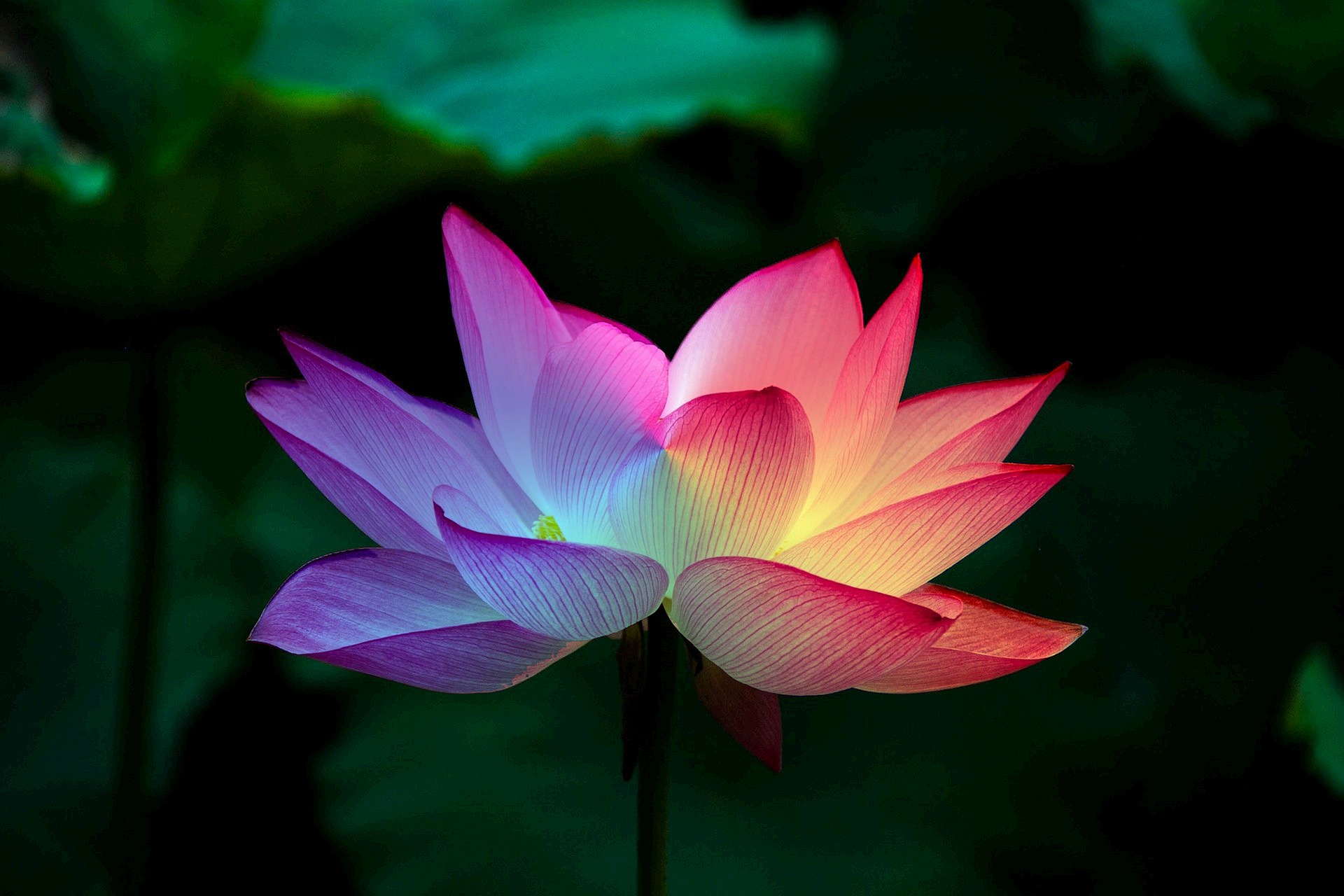 Image by Egonetix_xyz from Pixabay
Image by Egonetix_xyz from Pixabay
What are chakras?
Chakras are believed to be energy centers in our body. Subtle one, if we’re to be precise.
The word “chakra” is derived from Sanskrit and can be translated as a “wheel” or “disk”, because these energy centers are often described as spinning wheels or vortexes of energy.
Chakras are also referred to as little energetic dynamos, that are constantly “dancing to the rhythm” of different things, like our thoughts, emotions, lifestyle, and the energetic experiences that we have. It’s like they’re always on the move, responding to everything that happens to us!
There are seven chakras, existing arranged along the central channel called Sushumna, that runs along the spine.
Each chakra is associated with a specific location in the body, set of qualities or characteristics, but also with a specific colour.
It’s like they all have their own personalities! 🙂
Therefore, we have the following chakras:
- Root Chakra (Muladhara)
- Sacral Chakra (Svadhisthana)
- Solar Plexus Chakra (Manipura)
- Heart Chakra (Anahata)
- Throat Chakra (Vishuddha)
- Third Eye Chakra (Ajna)
- Crown Chakra (Sahasrara)
The concept of 7 chakras system is an essential one of spiritual and holistic health, being represented in different spiritual practices (including yoga, meditation, and Ayurveda).
When this system is in balance, we get to experience greater physical, emotional, and spiritual well-being. However, when any of the chakras gets imbalanced, we may struggle with an entire range of physical or emotional issues as well as general discomfort.
So, how can we make sure our chakras are balanced and happy?
There are lots of fun things to do! Some of them are: meditation, yoga, breathwork, some additional physical exercise, practicing mindfulness… There are many more ways available at the bottom of this article.
If we ever need some extra help, we can always reach out to a spiritual teacher or healer, to help us identify imbalances and develop a plan to restore the original balance.
Now, let’s check out more information about each chakra below.
Table of Contents
Root Chakra (Muladhara)
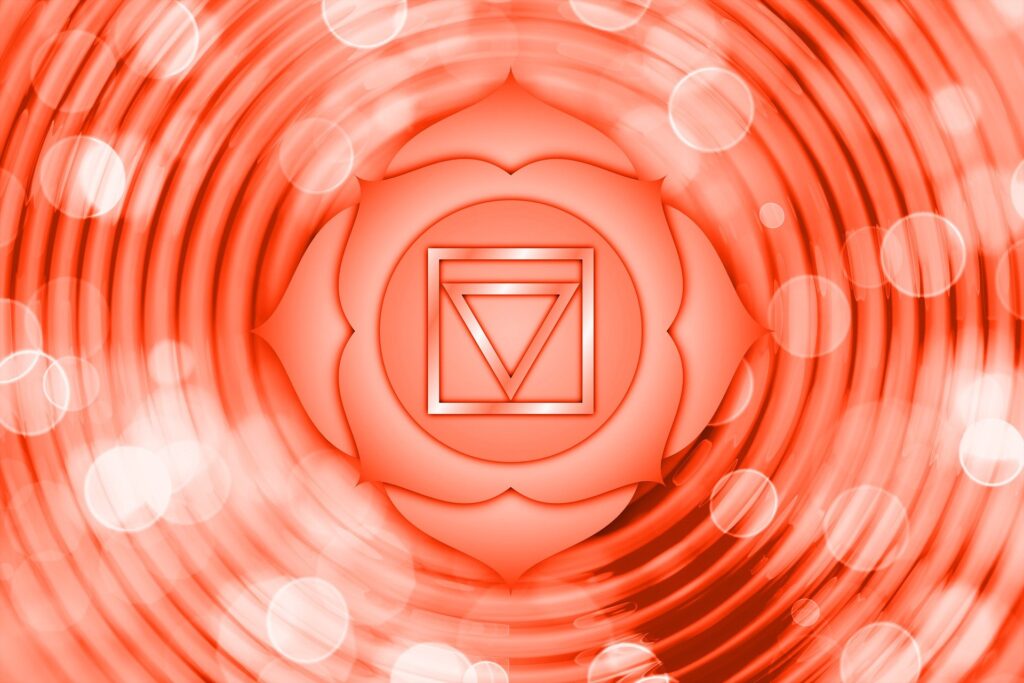 Image by Gerd Altmann from Pixabay
Image by Gerd Altmann from Pixabay
The first (1st) chakra, known as the Root Chakra or Muladhara, is located at the base of the spine and is associated with the colour red. It is responsible for our sense of safety, security, and stability.
When the Root Chakra is balanced, we feel a sense of groundedness and security in our lives. We may experience greater physical health and vitality, and we may feel more connected to our bodies and the Earth. This chakra is also associated with our sense of tribe, community, and connection to our ancestors.
When the Root Chakra is imbalanced, we may struggle with feelings of anxiety, fear, or a lack of security in our lives. We may also experience physical health problems or have difficulty feeling grounded and connected to our bodies.
Sacral Chakra (Svadhisthana)
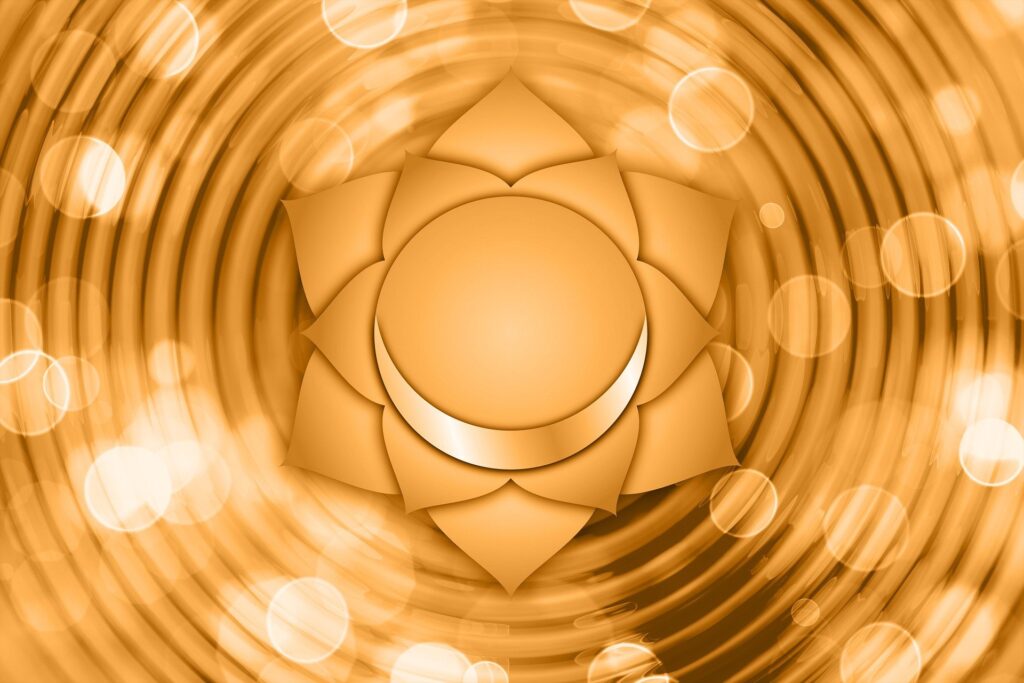 Image by Gerd Altmann from Pixabay
Image by Gerd Altmann from Pixabay
The second (2nd) chakra, known as the Sacral Chakra or Svadhisthana, is located in the lower abdomen and is associated with the colour orange. It is responsible for our creativity, pleasure, and emotional balance.
When the Sacral Chakra is balanced, we feel a sense of creativity and joy in our lives. We may experience greater emotional balance and stability, and we may be more open to experiencing pleasure and enjoying life’s simple pleasures. This chakra is also associated with sexuality and can help us to form healthy sexual relationships.
When the Sacral Chakra is imbalanced, we may struggle with feelings of guilt, shame, or an inability to experience pleasure. We may also experience difficulty forming healthy sexual relationships or may feel disconnected from our emotions.
Solar Plexus Chakra (Manipura)
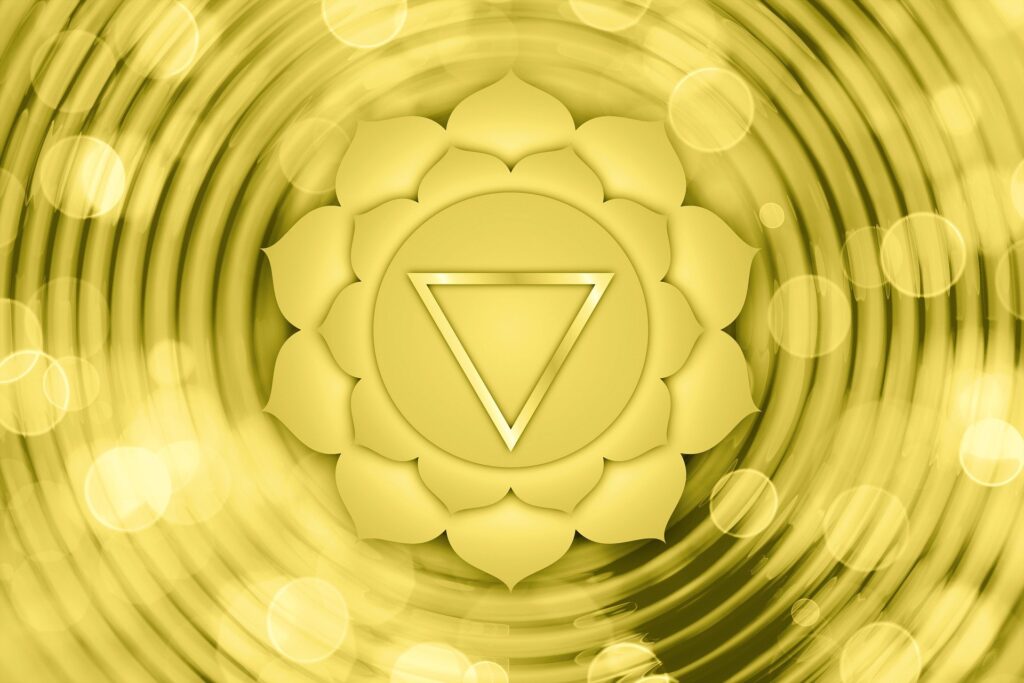 Image by Gerd Altmann from Pixabay
Image by Gerd Altmann from Pixabay
The third (3rd) chakra, known as the Solar Plexus Chakra or Manipura, is located in the upper abdomen and is associated with the colour yellow. It is responsible for our personal power, confidence, and self-esteem.
When the Solar Plexus Chakra is balanced, we feel a strong sense of personal power and confidence. We may experience a greater sense of self-esteem and self-worth, and we may be more assertive in our personal and professional lives. This chakra is also associated with the digestive system and can help us maintain good physical health and vitality.
When the Solar Plexus Chakra is imbalanced, we may struggle with feelings of insecurity, low self-esteem, or a lack of confidence. We may also experience digestive problems or issues with metabolism.
Heart Chakra (Anahata)
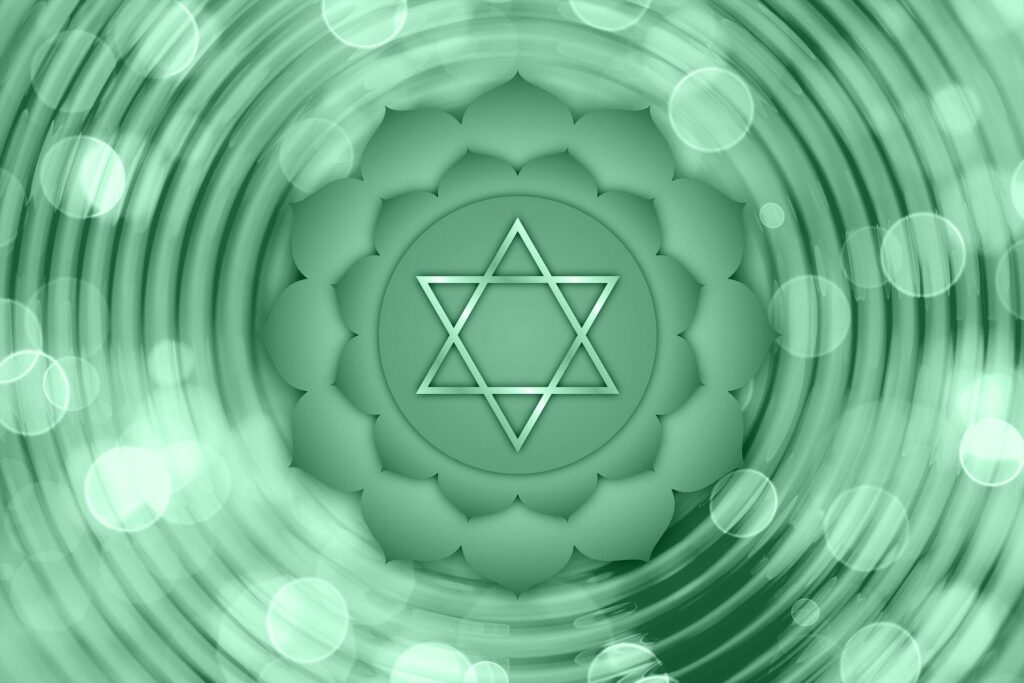 Image by Gerd Altmann from Pixabay
Image by Gerd Altmann from Pixabay
The fourth (4th) chakra, known as the Heart Chakra or Anahata, is located in the center of the chest and is associated with the colour green. It is responsible for our capacity to love, compassion, and emotional balance.
When the Heart Chakra is balanced, we feel a deep sense of love and compassion towards ourselves and others. We may experience greater emotional stability and balance, and we may find it easier to form and maintain healthy relationships. This chakra is also associated with self-love and can help us develop a greater sense of self-acceptance and self-worth.
When the Heart Chakra is imbalanced, we may struggle with feelings of loneliness, isolation, or a lack of connection with others. We may also experience difficulty with forming and maintaining healthy relationships, and may have trouble setting healthy boundaries.
Throat Chakra (Vishuddha)
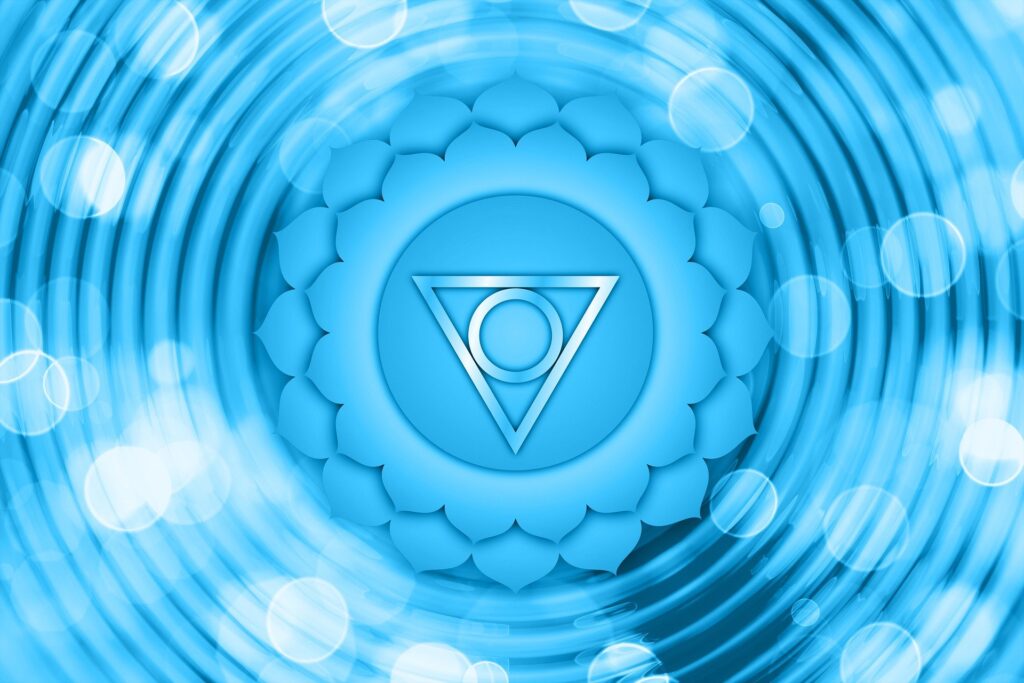 Image by Gerd Altmann from Pixabay
Image by Gerd Altmann from Pixabay
The fifth (5th) chakra, known as the Throat Chakra or Vishuddha, is located in the throat area and is associated with the colour blue. It is responsible for our communication, self-expression, and the ability to speak our truth.
When the Throat Chakra is balanced, we are able to communicate effectively and express ourselves authentically. We may feel confident in our ability to express our thoughts and feelings, and we may be good listeners as well. This chakra is also associated with creativity and can help us tap into our artistic abilities.
When the Throat Chakra is imbalanced, we may struggle with communication, either speaking too much or not enough. We may also feel like we are not being heard or understood, and may experience tension in our neck or throat.
Third Eye Chakra (Ajna)
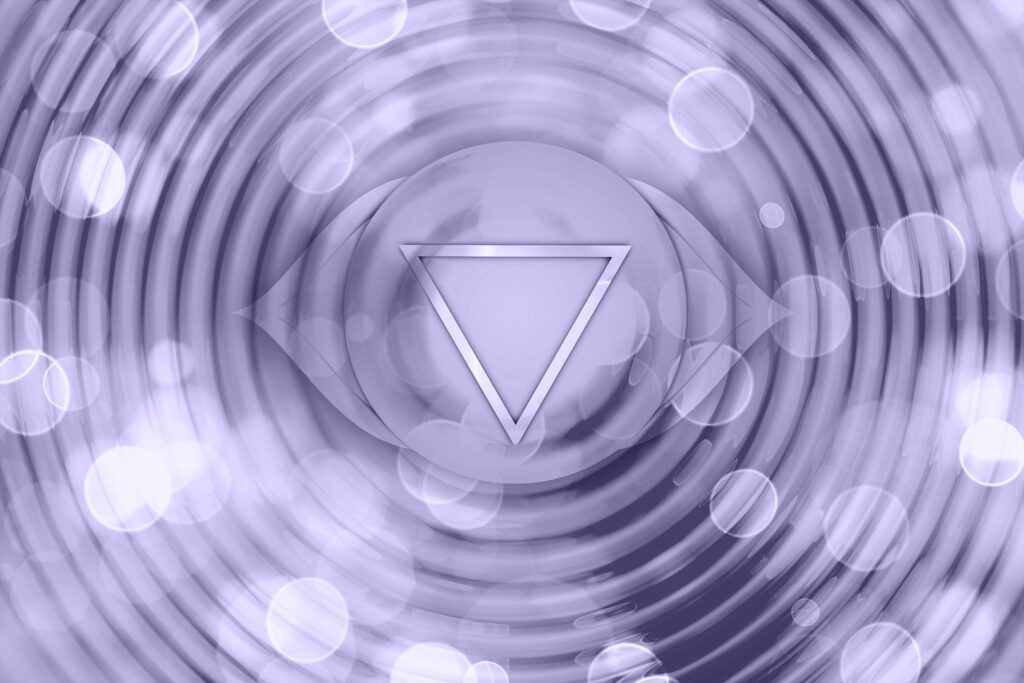 Image by Gerd Altmann from Pixabay
Image by Gerd Altmann from Pixabay
The sixth (6th) chakra, known as the Third Eye Chakra or Ajna, is located in the center of the forehead, between the eyebrows. It is associated with the colour indigo and is responsible for our intuition, inner wisdom, and spiritual insight.
When the Third Eye Chakra is balanced, we feel a strong connection to our intuition and inner wisdom. We may experience heightened states of consciousness, inner visions, and a greater sense of clarity and understanding. This chakra is also associated with psychic abilities and can help us tap into our psychic senses and abilities.
When the Third Eye Chakra is imbalanced, we may struggle with decision-making, have difficulty accessing our intuition, or experience confusion and lack of clarity. We may also struggle with anxiety or obsessive thinking.
Crown Chakra (Sahasrara)
 Image by Gerd Altmann from Pixabay
Image by Gerd Altmann from Pixabay
The seventh (7th) chakra, known as the Crown Chakra or Sahasrara, is located at the top of the head. It is associated with the colour violet or white and it plays a crucial role in our spiritual connection, enlightenment, and sense of oneness with the Universe.
When the Crown Chakra is balanced, we feel a deep sense of spiritual connection and inner peace. We may experience a greater sense of purpose and meaning in life and feel more attuned to our intuition and inner wisdom. This chakra is also associated with the concept of enlightenment and spiritual awakening, which can lead to a profound shift in consciousness.
When the Crown Chakra is imbalanced, we may feel disconnected from our spirituality or lack a sense of purpose and direction in life. We may also struggle with feelings of isolation or disconnection from others.
The Beauty of a Balanced Chakra System
Now, onto the chakras balancing act:
How is it actually done?
Check out the following article to learn more about different chakras balancing methods:
☯ Chakra Balancing Techniques and Practices
Check out the following article to learn more about benefits of balanced chakras, and recommended methods for each of them:
☯ Benefits of Balanced Chakras System, How to Balance Chakras
_____________________________
What are your experiences and opinion on Chakras topic?
Feel free to leave a comment below!
